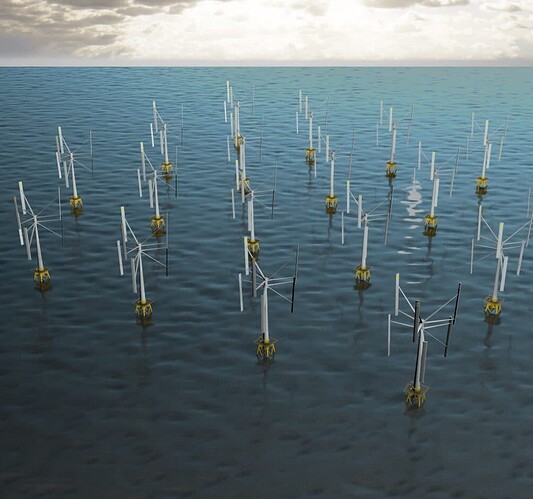All roads lead to…
@dougselsam certainly will prefer the first ST like solution rather than the second VAWT Dabiri like solution.
The Superturbine is most interesting I guess. I see many problems though… low production in low winds seems most obvious… it’s interesting that they are kind of middle between HAWT and VAWT…
To me, it seems really amazing, when you go to their website, they are promoting giant vertical-axis turbines for offshore, citing proposed counter-rotation of an upper half and a lower half as their main innovation.
As though counter-rotation for wind turbines is a new idea…
And they show photos of all the “in-all-seriousness” high-level “personnel” supposedly about to develop this amazing breakthrough…
You’d think actual grownups would know better.
Have they never read a book on wind energy?
Do they think we can’t see all the extra material their concept would use to create a less-efficient turbine that would tend to rip itself apart?
As though nobody ever built a vertical-axis turbine before…
As though vertical-axis turbines have not already gained a bad reputation whereby almost nobody builds one anymore…
I think they are holding back on revealing their secret weapon:
“Professor Crackpot” must be their behind-the-scenes technical advisor! ![]()
11 posts were split to a new topic: Off-topic comments split from World Wide Wind
Comments talking about this being a VAWT and therefore bad, here and on reddit, miss the point I think. This is a HAWT with a significant vertical “yaw” angle, and tower and blades working more in tension.
Offshore the boundary layer is lower I think. I wonder how much lower, and with that how much lower the need for a tall tower.
If you READ the article, they describe it as a vertical-axis machine more than once, even going into details about how much of the 360-degree rotation it makes power in. Also, note the generator at the bottom as an underwater counterweight. Sure, you can claim all the details are driven by physics - yes they were - way back when I invented them. I’m still waiting to hear what contributions you have made to wind energy. ![]()
Also of note: The article specifies a prototype of a certain size about to be “tested”. (More “news of the future!”) But if you take a second or two to think about it, why do they only show a rendering, if they have a prototype ready to test? Probably the same reason everything else ever said about this design is always set in future tense: They are probably never even going to do anything at all. Just like most of the rest of these “[press-release breakthroughs”. These online magazines just need more material to titillate us curious techie people. they could care less whether the articles are even true. Maybe someone should start keeping track of how many of the statements in these endless articles ever come true! I’m gonna guess - maybe 5%? ![]()



